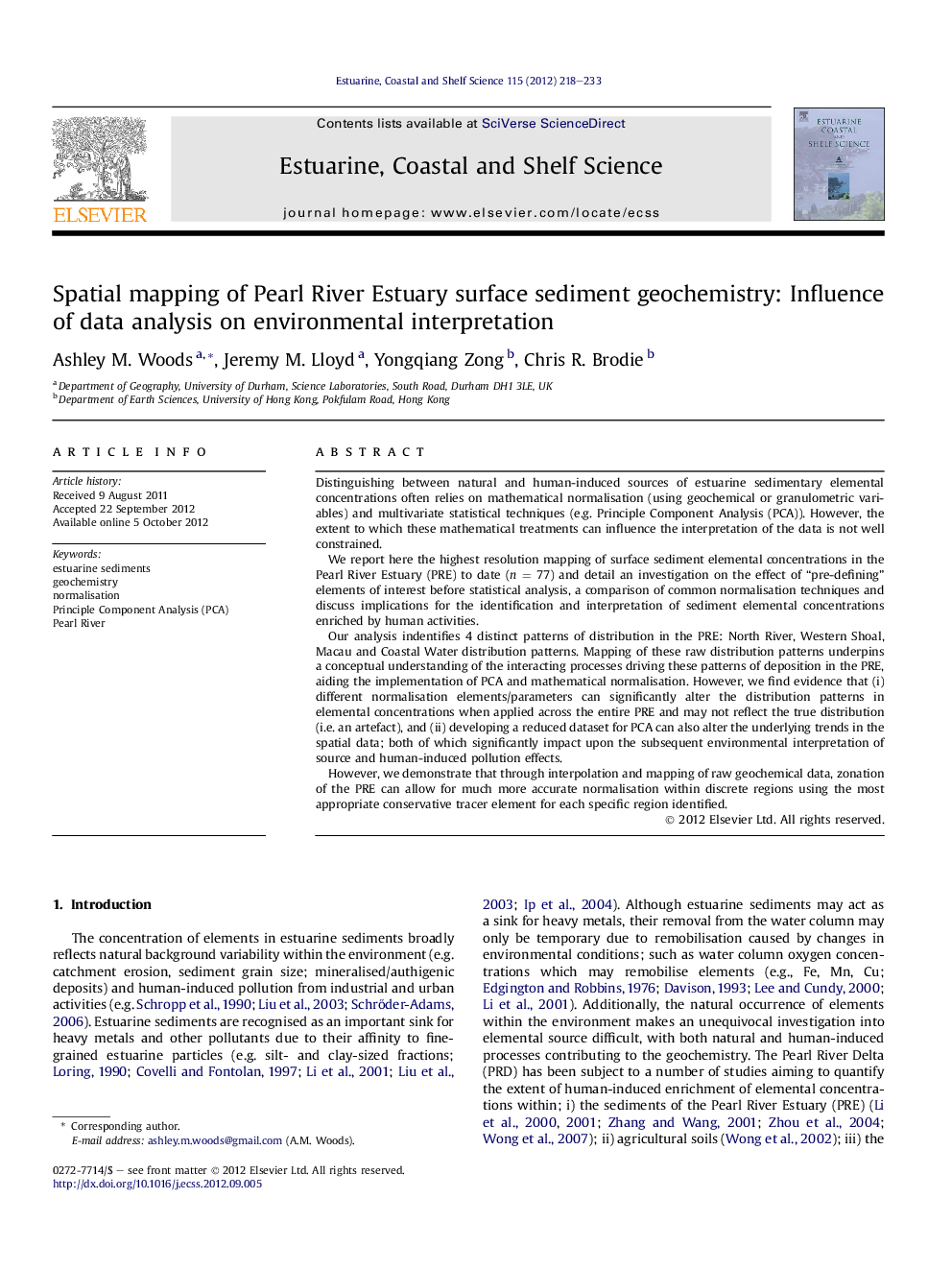| Article ID | Journal | Published Year | Pages | File Type |
|---|---|---|---|---|
| 4540149 | Estuarine, Coastal and Shelf Science | 2012 | 16 Pages |
Distinguishing between natural and human-induced sources of estuarine sedimentary elemental concentrations often relies on mathematical normalisation (using geochemical or granulometric variables) and multivariate statistical techniques (e.g. Principle Component Analysis (PCA)). However, the extent to which these mathematical treatments can influence the interpretation of the data is not well constrained.We report here the highest resolution mapping of surface sediment elemental concentrations in the Pearl River Estuary (PRE) to date (n = 77) and detail an investigation on the effect of “pre-defining” elements of interest before statistical analysis, a comparison of common normalisation techniques and discuss implications for the identification and interpretation of sediment elemental concentrations enriched by human activities.Our analysis indentifies 4 distinct patterns of distribution in the PRE: North River, Western Shoal, Macau and Coastal Water distribution patterns. Mapping of these raw distribution patterns underpins a conceptual understanding of the interacting processes driving these patterns of deposition in the PRE, aiding the implementation of PCA and mathematical normalisation. However, we find evidence that (i) different normalisation elements/parameters can significantly alter the distribution patterns in elemental concentrations when applied across the entire PRE and may not reflect the true distribution (i.e. an artefact), and (ii) developing a reduced dataset for PCA can also alter the underlying trends in the spatial data; both of which significantly impact upon the subsequent environmental interpretation of source and human-induced pollution effects.However, we demonstrate that through interpolation and mapping of raw geochemical data, zonation of the PRE can allow for much more accurate normalisation within discrete regions using the most appropriate conservative tracer element for each specific region identified.
► Mapping of raw geochemical data is an important step for spatial analysis. ► The normalisation element/parameter effects identification of enriched samples. ► No single normaliser can be used across the heterogeneous Pearl River Estuary. ► Raw mapping identifies sub-regions where a single normaliser may be used.
